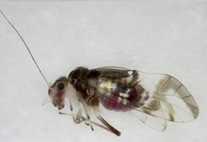Abstract
The lack of a protuberance in the basal antennal article in the holotype of Pinnotheres orcutti Rathbun, 1918, allows its removal from Pinnotheres Bosc, 1802 [type species, P. pisum (Linnaeus, 1767)]. The species is instead included in Tumi-dotheres Campos, 1989, because of the presence of a thick, tumid and firm carapace, and its surface covered with a short, dense, and deciduous tomentum; the third maxilliped having a propodus larger than the carpus; and the presence of a sub-spatulate dactylus of the third maxilliped medially inserted into a notch on the ventral margin of the propodus. Tumidoth-eres orcutti new combination can be separated from its sole Pacific Ocean congener, T. margarita Smith, 1870, by its unique dentition on the inner margin of the cheliped pollex, which is armed with a blunt proximal lobe and a row of small teeth, the two distal teeth being conspicuously the largest. In contrast, the pollex dentition of T. margarita consists of very small teeth, all similar in size.

